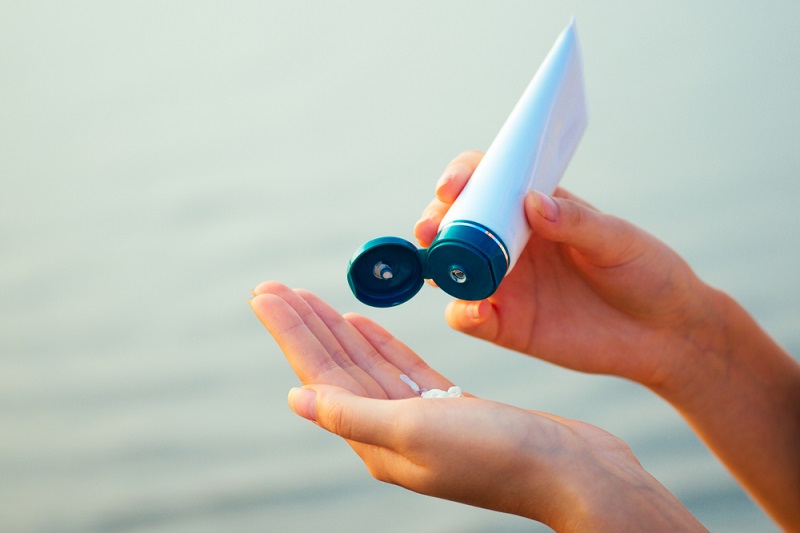Sunscreen 'Sea Change' May Be Coming with New FDA Rules

It's not summer just yet, but some big changes may be coming for sunscreen products.
On Thursday (Feb. 21), the U.S. Food and Drug Administration (FDA) announced that it was proposing new sunscreen regulations aimed at improving the safety and effectiveness of these essential summer products. The proposed rules include updates on which ingredients are considered safe for use in sunscreens, which products can be marketed "broad spectrum," how high the "sun protection factor" (SPF) can be and what information needs to be on the products' labels.
"Some of the essential requirements for these preventive tools haven't been updated in decades," FDA Commissioner Dr. Scott Gottlieb said in a statement. "Today's action is an important step in the FDA's ongoing efforts to take into account modern science to ensure the safety and effectiveness of sunscreens." [5 Things You Didn't Know About Sunscreen]
Sunscreen changes
One of the biggest proposed changes is an update to the types of sunscreen ingredients that are classified "generally recognized as safe and effective (GRASE)," a term that means the ingredient doesn't need to be approved by the FDA to be marketed.
Of the 16 currently marketed active ingredients in sunscreen, only two — zinc oxide and titanium dioxide — would be considered GRASE under the new proposal. Due to safety concerns, two other ingredients, PABA and trolamine salicylate, would not be considered GRASE, the FDA said. For the other 12 ingredients, there is currently not enough data to determine whether they are GRASE. So, the FDA is asking the sunscreen industry for additional evidence so it can evaluate those ingredients' safety and effectiveness.
The FDA is also concerned about the ability of some sunscreens to protect against ultraviolet A (UVA) rays. This type of radiation doesn't necessarily cause sunburns — as is the case with another type of radiation, ultraviolet B (UVB) rays — but UVA rays may cause skin aging and increase the risk of skin cancer.
The new rules propose that any sunscreens with an SPF value of 15 or higher should also provide "broad-spectrum protection," meaning that they protect against both UVA and UVB rays. In addition, as the SPF increases, the amount of protection against UVA radiation should also increase, the FDA said.
Sign up for the Live Science daily newsletter now
Get the world’s most fascinating discoveries delivered straight to your inbox.
The agency is also proposing to set the maximum value of SPF on sunscreen labels to "SPF 60+," because there is a lack of data to show that sunscreens with an SPF above 60 provide additional benefits that would be meaningful to a person's health.
Finally, the FDA is proposing some changes to sunscreen labels that would help consumers more easily identify key information about the products. For example, the agency may require labels to state the active ingredients on the front of the package.
Welcome news
Some consumer advocates welcomed the proposed changes.
"The FDA is at last taking serious steps to finalize rules that would require sunscreen companies to make products that are both safe and effective," David Andrews, a senior scientist at the nonprofit advocacy organization Environmental Working Group (EWG), said in a statement. The EWG, which focuses on environmental issues and public health, has previously raised concerns about the chemical oxybenzone. Found in many sunscreens, it may act as hormone disruptor and may damage coral reefs. Under the new proposal, oxybenzone is one of the ingredients that requires more data to determine whether it is GRASE.
The proposed changes will likely "cause a sea change in how sunscreens are formulated," Scott Faber, the senior vice president for government affairs at EWG, said in a press conference Thursday. Faber said he expects that many companies will quickly reformulate away from ingredients that are not GRASE or that lack enough data to be called GRASE. "It's incredibly welcomed news," he said.
The FDA is now seeking public comment on the proposed rule changes as the agency works to develop the final regulations.
- 5 Things You Must Know About Skin Cancer
- 7 Common Summer Health Concerns
- 10 Do's and Don'ts to Reduce Your Risk of Cancer
Originally published on Live Science.

Rachael is a Live Science contributor, and was a former channel editor and senior writer for Live Science between 2010 and 2022. She has a master's degree in journalism from New York University's Science, Health and Environmental Reporting Program. She also holds a B.S. in molecular biology and an M.S. in biology from the University of California, San Diego. Her work has appeared in Scienceline, The Washington Post and Scientific American.









